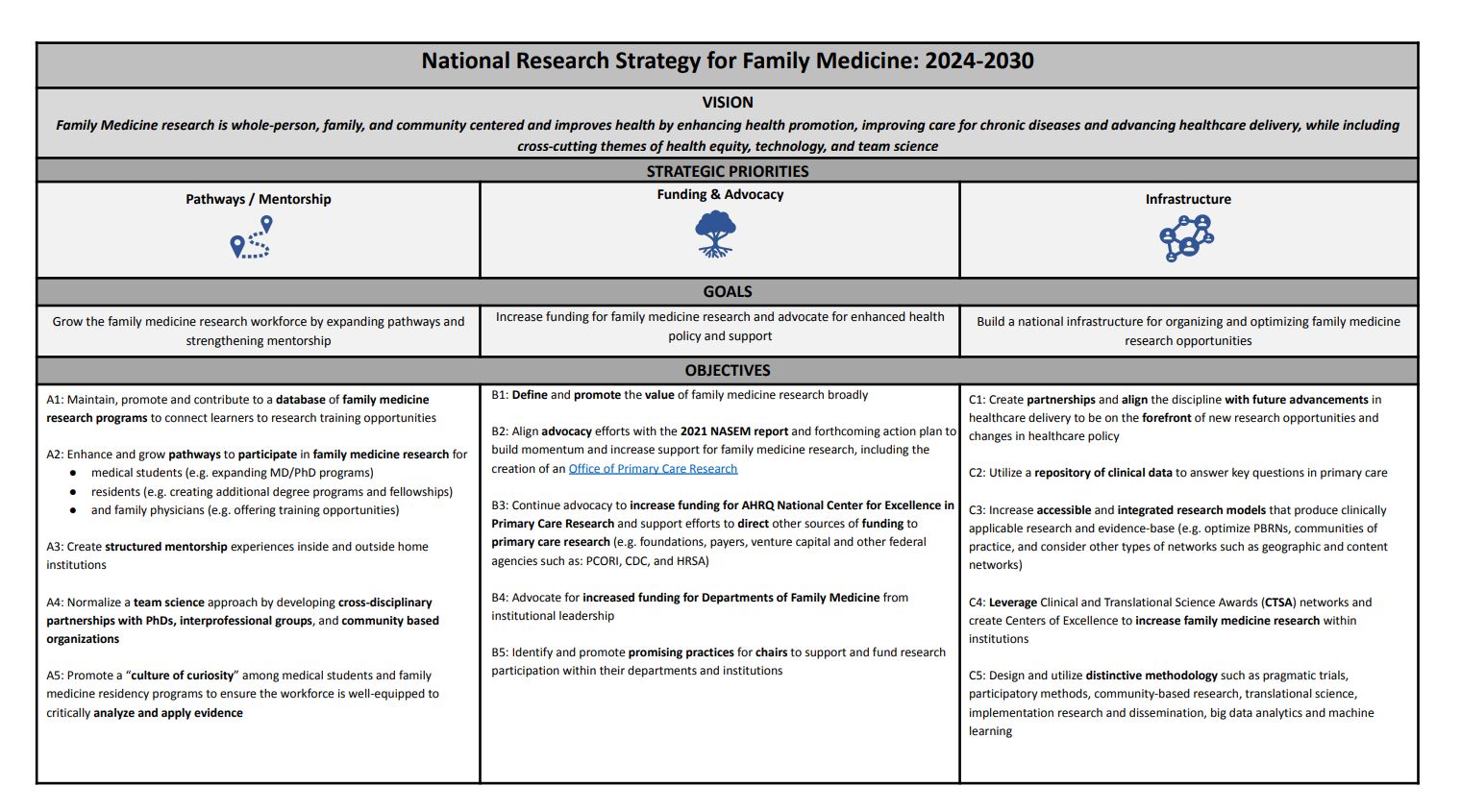2023 Research Summit
Monday, October 30, 2023
Hosted by Research Summit Planning Committee
Hilton San Francisco Union Square
San Francisco, CA
With special thanks to the ABFM Foundation for funding this event!
Hotel wifi:
Network: Hilton-Events
Password: napcrg23
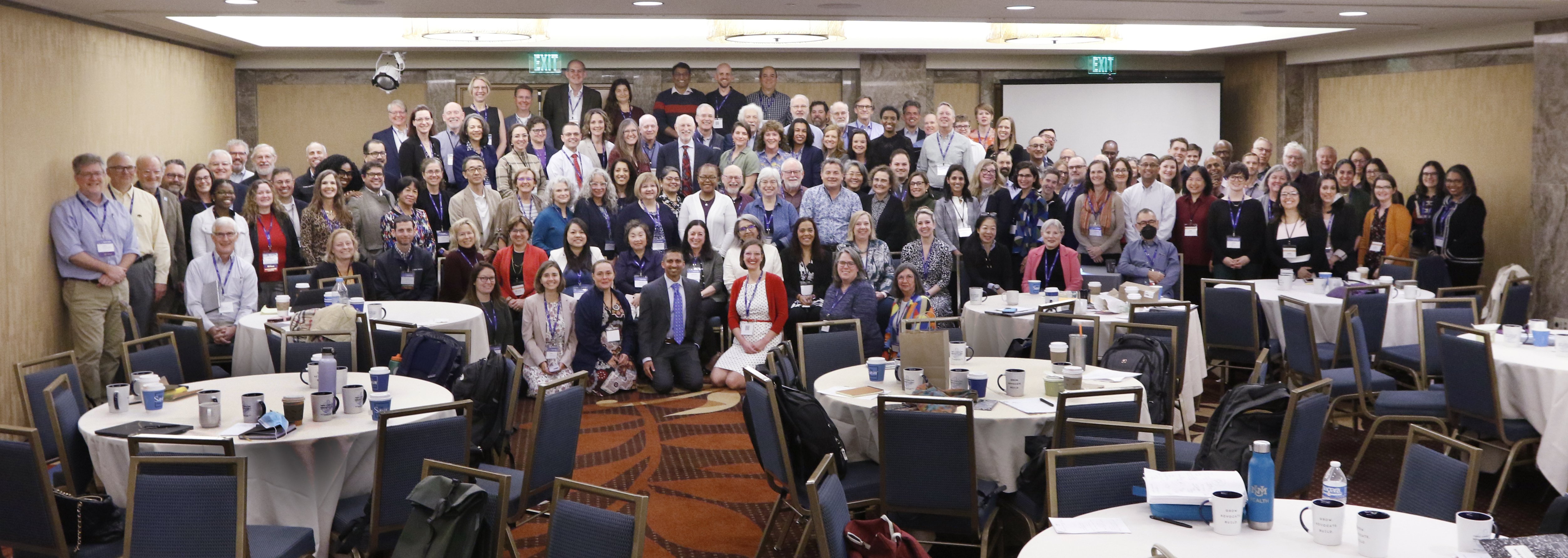
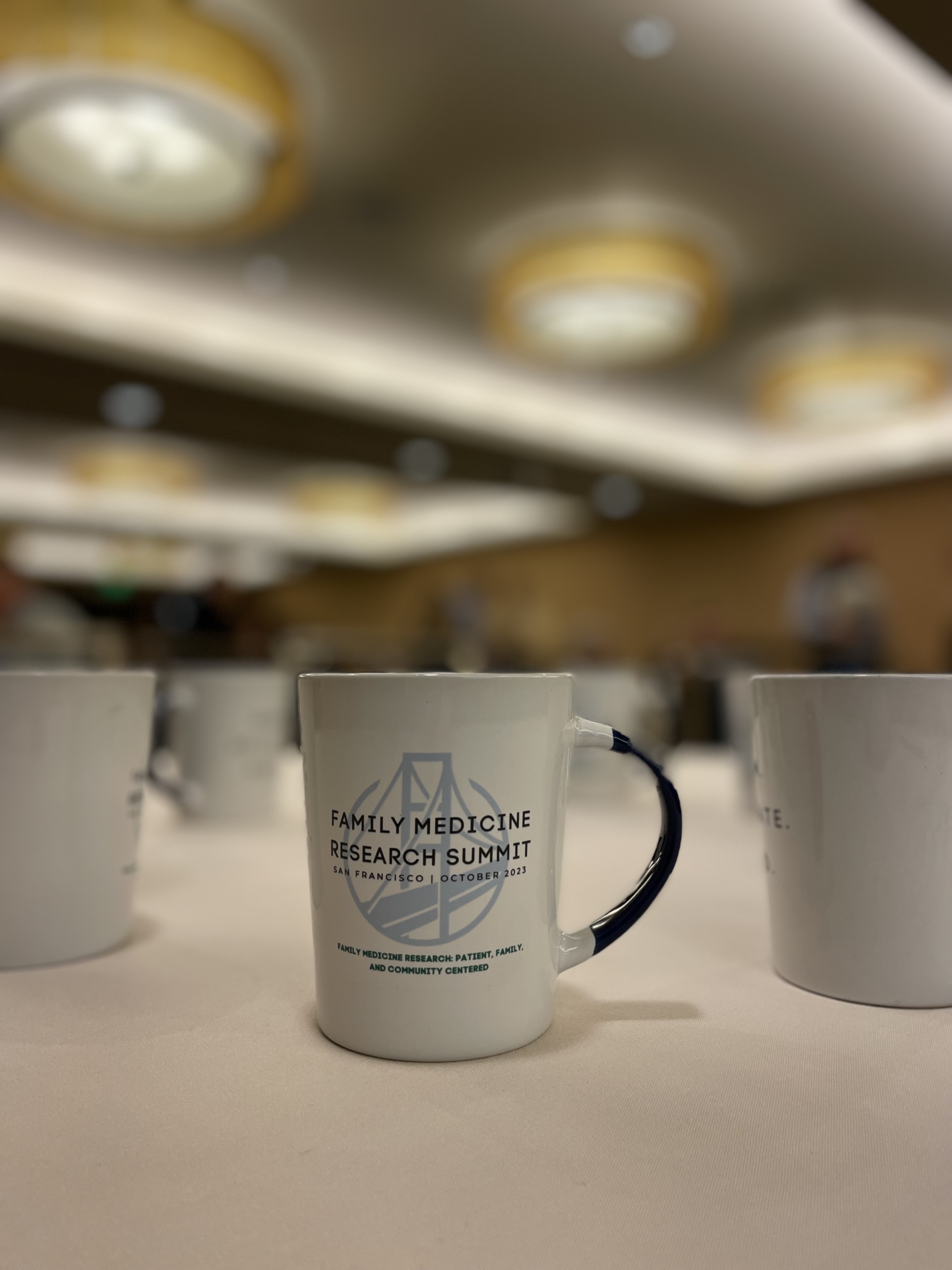
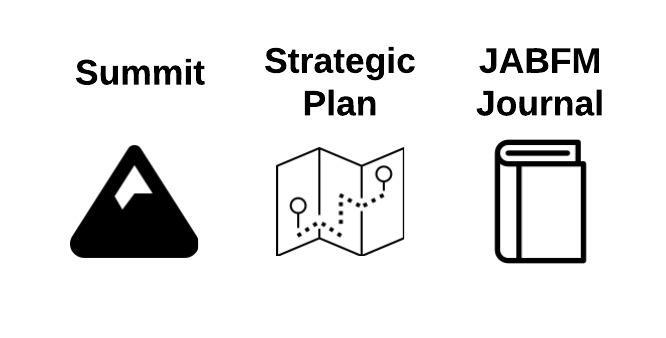
About the 2023 Research Summit
As outlined in ADFM's May 2023 Annals Commentary titled, "Toward a Unified and Collaborative Future: Creating a Strategic Plan for Family Medicine Research," family medicine has been grappling with its role as an academic discipline since its founding.1 At its roots, the family medicine specialty was founded as a counterculture movement to bring medicine back into the community. As a discipline that prides itself on using the best evidence, family medicine must support the concept of being “a clinical discipline with academic rigor that includes research as a key intellectual underpinning.”2 Despite progress in growing research capacity3 measured as extramural funding4-6 (NIH funding has increased from $59M in 20167 to $103M in 20218—great news!), or outputs such as publications,9 the total NIH funding to the entire discipline in 2021 was only twice the mean funding to one department of internal medicine, leaving room for growth.8
ADFM and NAPCRG are leading a process to develop a roadmap and strategic plan with action steps and metrics to move research in the discipline forward by 2030. The plan encompasses the whole spectrum of research,10 from those who engage in critical appraisal of evidence to career researchers. Family physicians are engaged in all stages of research with particular emphasis on patients, populations, and communities.
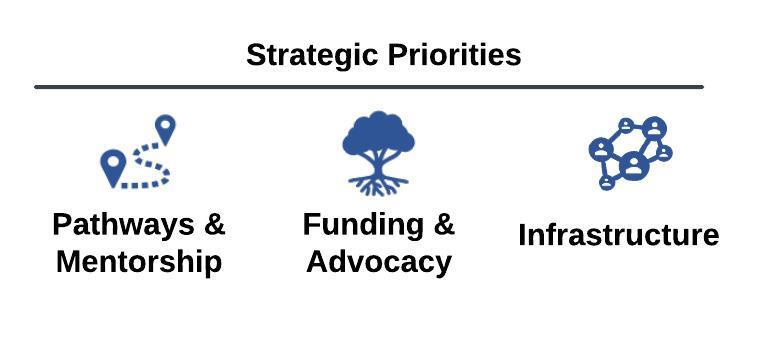
Goals of the summit:
- Share, socialize and hype up the strategic plan
- Align efforts - “Cultural transformation” for the specialty in addition to the specifics
- Identify priority initiatives and leaders for us to focus on as a discipline
- Start to hone in on action planning for some of the priority objectives that require more brainstorming - specific initiatives, resource planning
Research Summit Planning Committee
- Irf Asif, MD, Chair, UAB & Chair of ADFM Research Development Committee
- Amanda Weidner, MPH, Executive Director, ADFM
- Tom Vansaghi, PhD, Executive Director, NAPCRG
- Sam Elwood, Project and Data Manager, ADFM
- Dave Schneider, MD, Chair, UT Southwestern & ADFM President
- Miranda Moore, PhD, STFM
- Dean Seehusen, MD, Chair, Medical College of Georgia
- Peter Seidenberg, MD, Chair, Louisiana State University Health - Shreveport
- Viv Ramsden, RN, PhD, University of Saskatchewan, & Outgoing NAPCRG President
- Richelle Koopman, MD, MS, University of Missouri & NAPCRG Vice President
- Santina Wheat, MD, MPH, Northwestern Feinberg & AFMRD Member-At-Large
- Kaisani Afsha Rais, MD, Medical City Arlington Family Medicine Residency Program.
- Warren Newton, MD, MPH, ABFM President
- Christina Hester, PhD, MPH, Vice President of Research, DARTNet Institute
- Caroline Richardson, MD, Chair, Warren Alpert Medical School of Brown University & Annals of Family Medicine Editor
- Diana Rubio, MD, Georgetown & ADFM Resident Rep
- Beverly Onyekwuluje, MD, Past AFMRD Resident Rep
- Yalda Jabbapour, MD, Director of Robert Graham Center
- Gerardo Moreno, MD, MS, UCLA David Geffen School of Medicine & ABFM Board
- Tochi Iroku-Malize, MD, MPH, MBA, Chair, the Donald and Barbara Zucker School of Medicine at Hofstra/Northwell & AAFP President
- Jay Shubrook, DO, Touro University California College of Osteopathic Medicine
Meeting will start in Plaza B (breakouts in Plaza A and Union Square 23 & 24 where indicated below)
Please be sure to complete the pre-readings before attending.
OVERVIEW OF THE DAY
MONDAY, OCTOBER 30, 2023
PART 1: SETTING THE STAGE
7:30 - 8:00am - Registration in Yosemite Foyer
**The NAPCRG conference registration desk will have ALL nametags, whether you are registered for the rest of the conference or not.
8:00 - 8:15am - Arrive to Plaza B and get settled for the day
- **Breakfast on your own - Coffee and tea provided!
8:15 - 9:30am - Welcome, introductions & the process so far
9:30 - 10:00am - Goals for the Summit and framing for the day
10:00 - 10:20am - Break & move to breakout rooms
PART 2A: FOCUSED BREAKOUTS ON STRATEGIC PLAN PRIORITIES
10:20 - 12:20pm - Objective Action Planning
- 3 sessions happening concurrently on: 1) pathways & mentorship (Plaza A), 2) advocacy & funding (Plaza B), and 3) infrastructure (Union Square 23 & 24).
- each session will include some brief presentations; then group discussion in the 1-2-table-all format; then a prioritization exercise to walk away with prioritized action steps for the objectives within each of the strategic plan priority areas.
- SEE BREAKOUT SESSION AGENDAS IN MENU TO THE LEFT ON YOUR SCREEN
12:30-1:30pm - Lunch & Networking (Plaza B)
PART 2B: FOCUSED BREAKOUTS ON STRATEGIC PLAN PRIORITIES CONTINUED
1:30 - 3:50pm - Objective Action Planning
- 3 sessions happening concurrently on: 1) pathways & mentorship (Plaza A), 2) advocacy & funding (Plaza B), and 3) infrastructure (Union Square 23 & 24).
- each session will include some brief presentations; then group discussion in the 1-2-table-all format; then a prioritization exercise to walk away with prioritized action steps for the objectives within each of the strategic plan priority areas.
- SEE BREAKOUT SESSION AGENDAS IN MENU TO THE LEFT ON YOUR SCREEN
3:50 - 4:10pm - Break & move back to Plaza B
PART 3: NEXT STEPS & CALL TO ACTION
4:10 - 4:25pm - Objective round up
- Facilitators to share highlights top ideas from each round of discussion in breakout groups @ 5 mins each x 3 breakout groups (15 mins)
4:25 - 4:45pm - Communication strategy: Here, There, Share, & Everywhere
4:45 - 5:00pm - Summit wrap-up
PATHWAYS/MENTORSHIP
(ROOM: PLAZA A)
Suggested pre-reading for Pathways/Mentorship:
- Ecology of family physicians' research engagement. (Pimlott & Katz)
- Family Medicine Physician-Scientists are Jewels to Be Developed (outline, Bennett, Harper, & Mainous)
- Why I'm Glad I Quit My (First) PhD (Lombardo)
- Collaboration is Good (Mainous)
- Building a Culture of Curiosity/Inquiry in Family Medicine to Increase Research Capacity (Seidenberg et al)
- CERA: A Vehicle for Lowering Research Barriers in Family Medicine (Seehusen, Paladine, Gossa)
- Harmonization Across Academic Missions to Build Research and Scholarship Capacity: A Briefing paper (Peek and Berge)
- The Role of Residency Accreditation Program Requirements on Scholarly Activity in Family Medicine (Hoekzema & Newton, et al)
See Day Agenda for PART 1: SETTING THE STAGE
PART 2A: FOCUSED BREAKOUTS ON STRATEGIC PLAN PRIORITIES
10:20 - 10:22am - Overview of the Process (Miranda Moore)
Round 1: Objective A5 (Facilitator: Pete Seidenberg)
A5: Promote a “culture of curiosity” among medical students and family medicine residency programs to ensure the workforce is well-equipped to critically analyze and apply evidence
10:22 - 10:30am - Brief presentation to frame the objective (Pete Seidenberg)
10:30 - 11:50am - Group discussion toward ACTION
Questions to consider:
- How do we help position ‘trainees’/providers to conduct meaningful research, including in quality improvement (particularly as an entry point), that contributed to the evidence base?
- What does the ‘culture of curiosity’ look like when running well? [leads to: building success in research]
- How do you link your daily practice of seeing patients to this ‘culture of curiosity’ and ‘research’? How to capture your questions as they occur throughout your clinical sessions?
- NOW THAT YOU HAVE THIS CONTEXT, IF THIS WAS YOUR TASK -- WHAT ARE 1-2 ACTION STEPS NEEDED TO ACHIEVE THIS OBJECTIVE? (WHAT WOULD YOU DO FIRST?)
1-2-Table-ALL (~75 mins)
- 3 mins silent reflection
- 4 mins partner discussion
- 35 minutes table discussion (~10 minutes each Q, last 5 mins last Q)
- 25 minutes report out (Top 2 ideas @ 2.5 mins x 10 tables = 25 mins)
- 10 mins ANSWER POLL (consensus 2 ideas)
Round 2: Objective A4 (Facilitator: Miranda Moore)
A4: Normalize a team science approach by developing cross-disciplinary partnerships with PhDs, interprofessional groups, and community based organizations
11:50 - 11:55am - Brief presentation to frame the objective (Miranda Moore)
11:55am - 12:20pm - Group discussion toward ACTION
Questions to consider:
- What does the ideal successful team look like?
- Who are the members of the team?
- How does it depend on the institution/organization?
- How do you build relationship to form/maintain these teams?
- The work needs to be both top-down AND bottom-up. What are strategies for each? How do we establish and reinforce these pathways?
- NOW THAT YOU HAVE THIS CONTEXT, IF THIS WAS YOUR TASK -- WHAT ARE 1-2 ACTION STEPS NEEDED TO ACHIEVE THIS OBJECTIVE? (WHAT WOULD YOU DO FIRST?)
1-2-Table-ALL (~75 mins)
- 3 mins silent reflection
- 4 mins partner discussion
12:20pm - 12:30pm - BREAK AND MOVE TO LUNCH
12:30-1:30pm - Lunch & Networking (Plaza B)
PART 2B: FOCUSED BREAKOUTS ON STRATEGIC PLAN PRIORITIES CONTINUED
1:30pm - 1:40pm - MOVE BACK TO BREAKOUT ROOMS
1:40pm - 2:20pm - RESUME Group discussion toward ACTION (OBJECTIVE A4)
- 35 minutes table discussion (~10 minutes each Q, last 5 mins last Q)
- 25 minutes report out (Top 2 ideas @ 2.5 mins x 10 tables = 25 mins)
- 10 mins ANSWER POLL (consensus 2 ideas)
Round 3: Objective A3 (Facilitator: Miranda Moore)
A3: Create structured mentorship experiences inside and outside home institutions
2:20 - 2:30pm - Brief presentations to frame the objective (Diane Harper - NIH programs; Jerica Berge - UMN "Collaborative Scholarship Intensive--Family medicine" (CSI-FM), Chip Mainous - other opportunities)
- FOR CONTEXT: slides on clinical career research development, opportunities, and pathways (focused on NIH)
p2:30 - 3:50pm - Group discussion toward ACTION
Questions to consider:
- What role does mentorship play? Thinking of internal and external pathways?
- How do you build a mentor base?
- When starting from 0, do they truly ‘not exist’?
- How to gain awareness of and tap into existing networks?
- What skills/training do mentors need? How do we support potential mentors to grow these skills?
- NOW THAT YOU HAVE THIS CONTEXT, IF THIS WAS YOUR TASK -- WHAT ARE 1-2 ACTION STEPS NEEDED TO ACHIEVE THIS OBJECTIVE? (WHAT WOULD YOU DO FIRST?)
1-2-Table-ALL (~75 mins)
- 3 mins silent reflection
- 4 mins partner discussion
- 35 minutes table discussion (~10 minutes each Q, last 5 mins last Q)
- 25 minutes report out (Top 2 ideas @ 2.5 mins x 10 tables = 25 mins)
- 10 mins ANSWER POLL (consensus 2 ideas)
3:50 - 4:10pm - Break & move back to Plaza B
See Day Agenda for PART 3: NEXT STEPS & CALL TO ACTION
ADVOCACY & FUNDING
(ROOM: PLAZA B)
Suggested pre-reading for Advocacy & Funding:
- Family Medicine Research from the Editor's Perspective (Seehusen, Schrager, Sexton)
- Osteopathic Research in Family Medicine (Stacey, Seidenberg, LaBaere, Jepson)
- Advancing Family Medicine Research in Alignment with National Funding Priorities (Asif)
- Past is Prologue: The Essential Role of Advocacy in Shaping the Future of Primary Care Research (Liaw, Tong, DeJonghe, Wittenberg)
- Harmonization Across Academic Missions to Build Research and Scholarship Capacity: A Briefing paper (Peek and Berge)
- Emergency medicine research: 2030 strategic goals (Neumar et al)
- slides -- Current grants to Departments of Family Medicine by NIH as of Sept 2023 (Johnson)
- The Role of Residency Accreditation Program Requirements on Scholarly Activity in Family Medicine (Hoekzema & Newton, et al)
See Day Agenda for PART 1: SETTING THE STAGE
PART 2A: FOCUSED BREAKOUTS ON STRATEGIC PLAN PRIORITIES
Round 1: Objective B2 (Facilitator: Irfan Asif)
B2: Align advocacy efforts with the 2021 NASEM report and forthcoming action plan to build momentum and increase support for family medicine research, including the creation of an Office of Primary Care Research
10:20 - 11:20am - Brief presentations to frame the objective (Jeremy Brown, Office of Emergency Care Research, NIH; Sabrina Wong, formerly at National Institute of Nursing, NIH; Bob Phillips, Co-chair of 2021 NASEM Report on Implementing High Quality Primary Care)
11:20 - 12:20pm - Group discussion toward ACTION
Questions to consider:
- NOW THAT YOU HAVE THIS CONTEXT, IF THIS WAS YOUR TASK -- WHAT ARE 1-2 ACTION STEPS NEEDED TO ACHIEVE THIS OBJECTIVE? (WHAT WOULD YOU DO FIRST?)
1-2-Table-ALL (~60 mins)
- 3 mins silent reflection
- 4 mins partner discussion
- 25 minutes table discussion
- 20 minutes report out
- 8 mins ANSWER POLL (consensus 2 ideas)
12:20 - 12:30pm - BREAK AND MOVE TO LUNCH
12:30-1:30pm - Lunch & Networking (Plaza B)
PART 2B: FOCUSED BREAKOUTS ON STRATEGIC PLAN PRIORITIES CONTINUED
1:30pm - 1:40pm - MOVE BACK TO BREAKOUT ROOMS
Round 2: Objective B3 (Facilitator: Gerardo Moreno)
B3: Continue advocacy to increase funding for AHRQ National Center for Excellence in Primary Care Research and support efforts to direct other sources of funding to primary care research (e.g. foundations, payers, venture capital and other federal agencies such as: PCORI, CDC, and HRSA)
1:40 - 1:55pm - Brief presentations to frame the objective (Sebastian Tong - overview; Aimee Eden - AHRQ funding priorities and how family medicine fits in; Shannon McDevitt - HRSA funding priorities and how family medicine fits in)
1:55 - 2:45pm - Group discussion toward ACTION
Questions to consider:
- NOW THAT YOU HAVE THIS CONTEXT, IF THIS WAS YOUR TASK -- WHAT ARE 1-2 ACTION STEPS NEEDED TO ACHIEVE THIS OBJECTIVE? (WHAT WOULD YOU DO FIRST?)
1-2-Table-ALL (~50 mins)
- 2 mins silent reflection
- 5 mins partner discussion
- 25 minutes table discussion
- 15 minutes report out
- 3 mins ANSWER POLL (consensus 2 ideas)
Round 3: Objectives B4 & B5 (Facilitator: David Schneider)
B4: Advocate for increased funding for Departments of Family Medicine from institutional leadership
B5: Identify and promote promising practices for chairs to support and fund research participation within their departments and institutions
2:45 - 3:00pm - Brief presentations to frame the objective (Mark Johnson & Masahito Jimbo)
3:00 - 3:50pm - Group discussion toward ACTION
Questions to consider:
- NOW THAT YOU HAVE THIS CONTEXT, IF THIS WAS YOUR TASK -- WHAT ARE 1-2 ACTION STEPS NEEDED TO ACHIEVE THIS OBJECTIVE? (WHAT WOULD YOU DO FIRST?)
1-2-Table-ALL (~50 mins)
- 2 mins silent reflection
- 5 mins partner discussion
- 25 minutes table discussion
- 15 minutes report out
- 3 mins ANSWER POLL (consensus 2 ideas)
3:50 - 4:10pm - Break & move back to Plaza B
See Day Agenda for PART 3: NEXT STEPS & CALL TO ACTION
INFRASTRUCTURE
(ROOM: UNION SQUARE 23 & 24)
Suggested pre-reading for Infrastructure:
- The Current State of Research Capacity in US Family Medicine Departments (Weidner et al)
- Harmonization Across Academic Missions to Build Research and Scholarship Capacity: A Briefing paper (Peek and Berge)
- Improving the Reporting of Primary Care Research: Consensus Reporting Items for Studies in Primary Care - the CRISP Statement (Phillips et al)
- Family Medicine Research from the Editor's Perspective (Seehusen, Schrager, Sexton)
- Collaboration is Good (Mainous)
- CERA: A Vehicle for Lowering Research Barriers in Family Medicine (Seehusen, Paladine, Gossa)
- Advancing Family Medicine Research in Alignment with National Funding Priorities (Asif)
- Research Metrics and Development of the PACER Tool for Productivity and Capacity Evaluation in Research: A Scoping Review (Stacey, et al)
- Slides on the UCSF Center for Excellence in Primary Care - an example of the "center" model (Grumbach)
- Practice-Based Research Networks - Asphalt on the Blue Highways of Primary Care Research (Westfall, Wilson, & Nease)
See Day Agenda for PART 1: SETTING THE STAGE
PART 2A: FOCUSED BREAKOUTS ON STRATEGIC PLAN PRIORITIES
Round 1: Objective C5 (Facilitator: Caroline Richardson)
C5: Design and utilize distinctive methodology such as pragmatic trials, participatory methods, community-based research, translational science, implementation research and dissemination, big data analytics and machine learning
10:20 - 10:30am - Brief presentations to frame the objective (Richelle Koopman)
10:30 - 11:25am - Group discussion toward ACTION
Framing: Introduce some of the unique family medicine centric methodologies that exist and discuss why these methodologies (even if they’re the best for patients, generate the best solutions) create problems for us. Highlight them being difficult to fund/people not knowing how to use and therefore not translated into practice often.
Question to consider: NOW THAT YOU HAVE THIS CONTEXT, IF THIS WAS YOUR TASK -- WHAT ARE 1-2 ACTION STEPS NEEDED TO ACHIEVE THIS OBJECTIVE? (WHAT WOULD YOU DO FIRST?)
1-2-Table-ALL (~55 mins)
- 2 mins silent reflection
- 5 mins partner discussion
- 25 minutes table discussion
- 15 minutes report out
- 8 mins ANSWER POLL (consensus 2 ideas)
Round 2: Objective C1 (Facilitator: Christina Hester)
C1: Create partnerships and align the discipline with future advancements in healthcare delivery to be on the forefront of new research opportunities and changes in healthcare policy
11:25 - 11:30am - Brief presentations to frame the objective (Deb Cohen - research infrastructure possibilities)
11:30 - 12:20pm - Group discussion toward ACTION
Framing: Connecting the clinical enterprise to researcher enterprise a) getting them to answer questions b) bringing back to the research frontlines
Question to consider: NOW THAT YOU HAVE THIS CONTEXT, IF THIS WAS YOUR TASK -- WHAT ARE 1-2 ACTION STEPS NEEDED TO ACHIEVE THIS OBJECTIVE? (WHAT WOULD YOU DO FIRST?)
1-2-Table-ALL (~50 mins)
- 2 mins silent reflection
- 5 mins partner discussion
- 25 minutes table discussion
- 15 minutes report out
- 3 mins ANSWER POLL (consensus 2 ideas)
12:20 - 12:30pm - BREAK AND MOVE TO LUNCH
12:30-1:30pm - Lunch & Networking (Plaza B)
PART 2B: FOCUSED BREAKOUTS ON STRATEGIC PLAN PRIORITIES CONTINUED
1:30pm - 1:40pm - MOVE BACK TO BREAKOUT ROOMS
Round 3: Objectives C3 & C4 (Facilitator: Dean Seehusen)
C3: Increase accessible and integrated research models that produce clinically applicable research and evidence-base (e.g. optimize PBRNs, communities of practice, and consider other types of networks such as geographic and content networks)
C4: Leverage Clinical and Translational Science Awards (CTSA) networks and create Centers of Excellence to increase family medicine research within institutions
1:40 - 2:00pm - Brief presentations to frame the objective (Nancy Pandhi - collaboration with CTSAs; Autumn Kieber-Emmons - example of a geographic network; Stephanie Bunt - successful PBRNs)
2:00 - 2:30pm - Group brainstorming discussion: other ideas on networks
2:30 - 3:50pm - Group discussion toward ACTION
Framing: Increasing utilization of existing research infrastructure:a) decreasing barriers to access; b) bolstering what's there; c) raising awareness
Question to consider: NOW THAT YOU HAVE THIS CONTEXT, IF THIS WAS YOUR TASK -- WHAT ARE 1-2 ACTION STEPS NEEDED TO ACHIEVE THIS OBJECTIVE? (WHAT WOULD YOU DO FIRST?)
1-2-Table-ALL (~75 mins)
- 3 mins silent reflection
- 5 mins partner discussion
- 35 minutes table discussion
- 20 minutes report out
- 10 mins ANSWER POLL (consensus 2 ideas)
3:50 - 4:10pm - Break & move back to Plaza B
See Day Agenda for PART 3: NEXT STEPS & CALL TO ACTION
Process & Outcome to Date
Toward a Unified and Collaborative Future: Creating a Strategic Plan for Family Medicine Research
Data from Partner Engagement
Summary of interviews and focus groups
Summary of visioning survey results
Collated Version of Research Inventory Reports from the 8 National FM organizations
**Suggested Pre-reading is listed on each breakout page**
Below are some additional references for context:
Bowman MA, Lucan SC, Rosenthal TC, Mainous AG 3rd, James PA. Family Medicine Research in the United States From the late 1960s Into the Future. Fam Med. 2017;49(4):289-295. [History of research in US Family Medicine]
Olde Hartman TC, Poels PJ, Licht-Strunk E, van Weel C. Combining vocational and research training. Aust Fam Physician. 2008;37(6):486-488. [Description of a Dutch program that combines vocational training in family medicine with research training]
Terry AL, Brown JB, Van Hoorn R, Stewart M; TUTOR-PHC Program Co-Investigators. Evolution and 15-year effect of a pan-Canadian training program: Transdisciplinary Understanding and Training on Research-Primary Health Care. Can Fam Physician. 2018 Jun;64(6):475-476. [Description of the evolution over 15 years of the Canadian Transdisciplinary Understanding and Training on Research–Primary Health Care (TUTOR-PHC) program]
van Weel C, Rosser WW. Improving health care globally: a critical review of the necessity of family medicine research and recommendations to build research capacity. Ann Fam Med. 2004;2 Suppl 2(Suppl 2):S5-S16. Published 2004 May 26. doi:10.1370/afm.194 [Considerations for building research capacity in family medicine worldwide]
The Building Research Capacity Initiative has number of references collated if you want a deeper dive into capacity and capacity-building. You can find those resources here.




